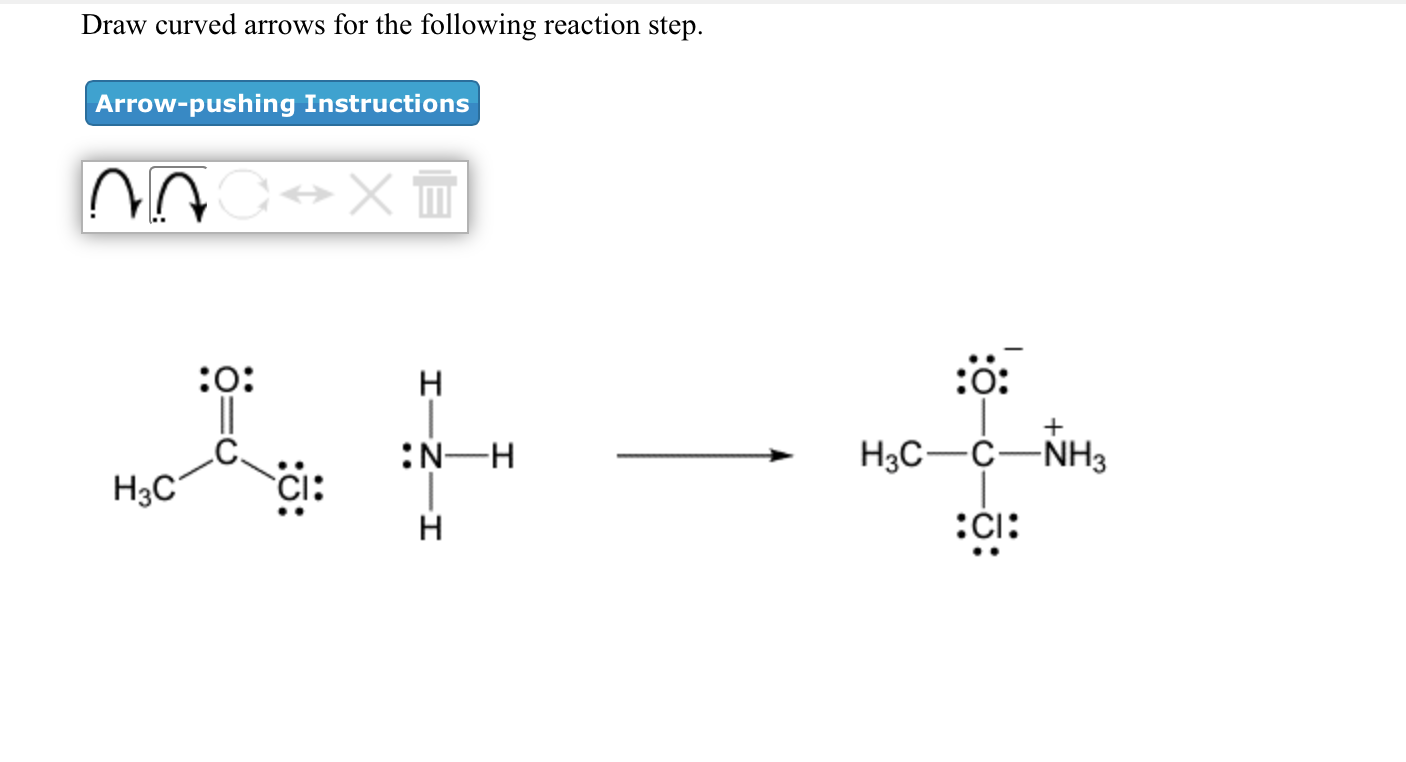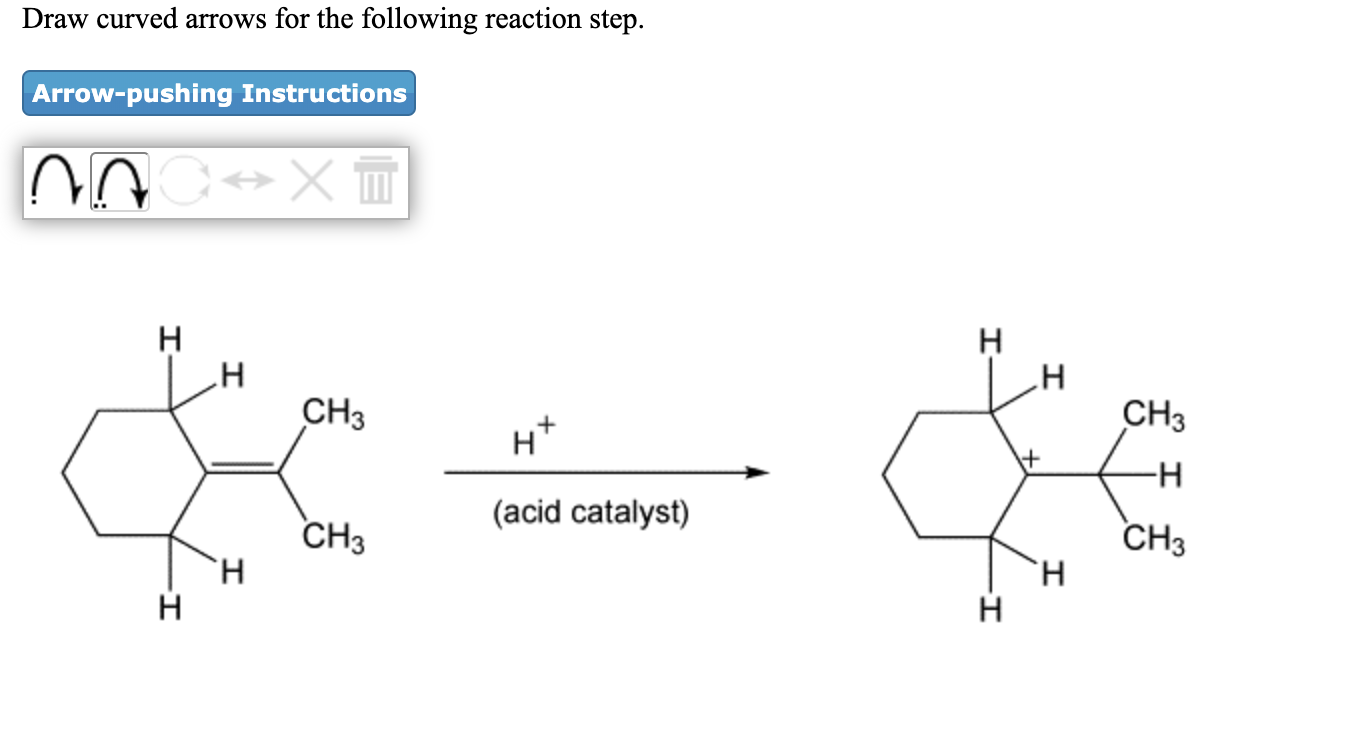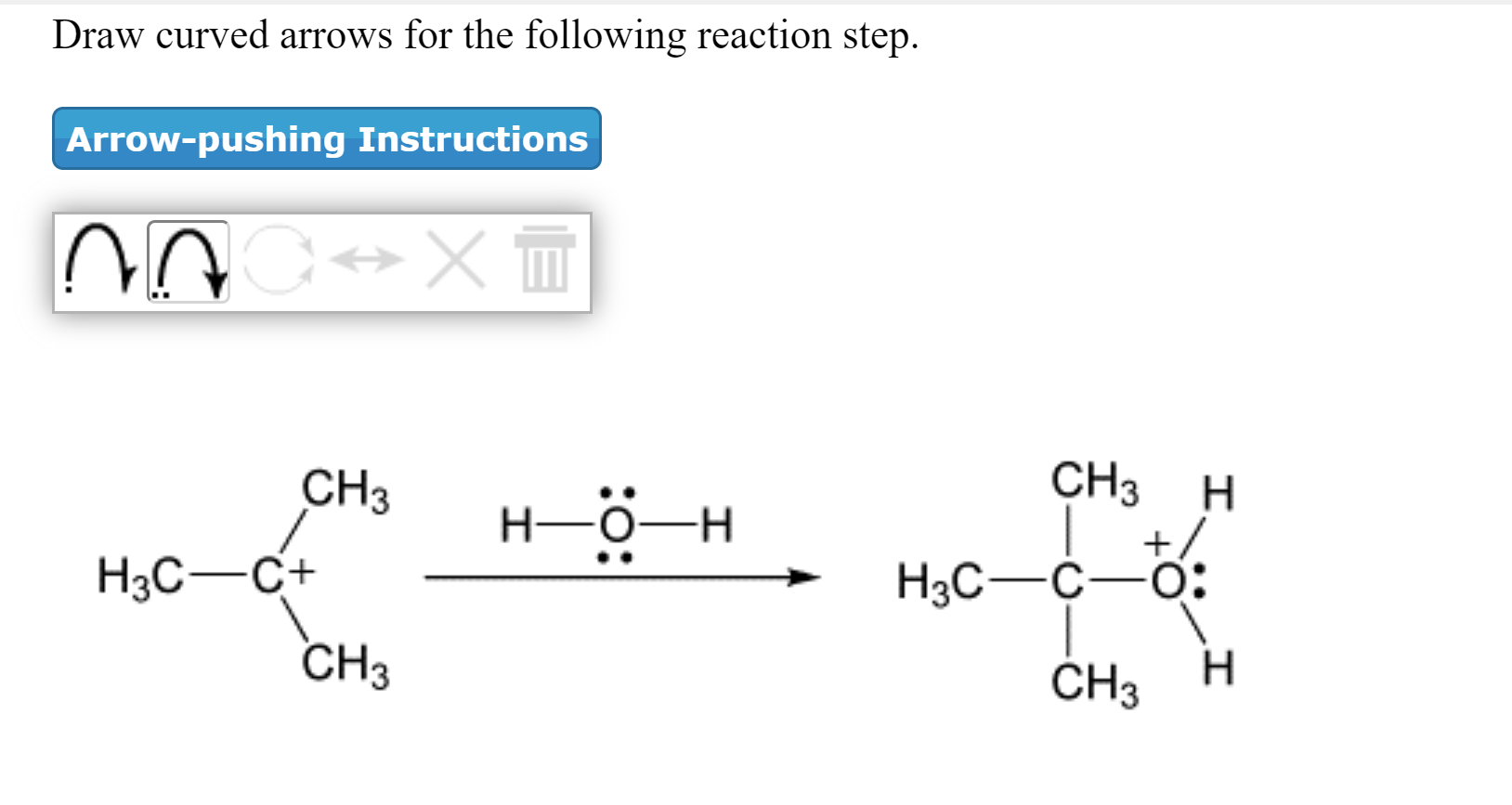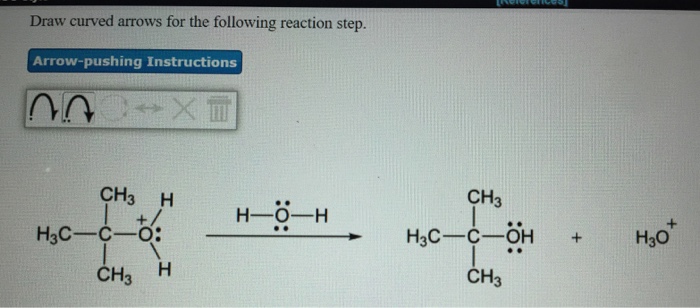EXERCISES QUESTIONS Q661 Draw curved arrows to indicate mechanisms for the following reactions. - Each arrow represents the movement of two electrons from a nucleophile to an electrophile.

Solved Draw Curved Arrows For The Following Reaction Step Chegg Com
RCES FULL SCREEN PO Practice Problem 0638 Draw ONLY curved arrows for each step of the following mechanism.

. Arrow-pushing Instructions NA-X XT CH3 H CH3 H-O-H H3C-C-OH -H H3CC0. Then draw curved arrows to illustrate the bond-making and bond-breaking processes. Curved arrows are a formal notation to help us understand the electron flow in organic reactions.
Dietmar Kennepohl FCIC Professor of Chemistry Athabasca University. Protonation occurs in which one of the carbonyl groups is protonated. Curved arrows in organic reaction mechanisms.
Please Analyze The Steps Involved In The Mechanism. - Each arrow represents the movement of two electrons from a nucleophile to an electrophile. Draw Each Step Of The Mechanism Separately.
Identify the electrophile and the nucleophile in each of the following reaction steps. Cyclohexene bromine yields a dibromocyclohexane Draw structures - including charges and electrons - and add curved arrows. Proton transfer proton transfer nucleophilic attack.
Add curved arrows to draw the final step of the mechanism. 2 Draw both the organic and inorganic interme. Arrow_forward Draw curved arrows to show the movement of electrons in this step of the mechanism.
537 38 540 H 0 H H Н 074 H 079 083 089 090 ng from H HO OH HO OH Hö OH Ixit HI H Study 638a Get help answering Mol Correct. Ian Hunt Department of Chemistry University of Calgary Dr. Given the following single-step reaction draw the curved-arrow mechanism.
Add a curved arrow to show how the final product is formed. There will be a total of three curved arrows one of which is drawn for you. Loss of leaving group C.
Include nonbonding electrons and charges where applicable. H Br H H. The following solution is suggested to handle the subject For the following reaction.
Lets keep an eye on the content below. Up to 256 cash back Show transcribed image text Show the mechanism for the following reaction conducted at -5 degree C in CCI4. Arrow-pushing Instructions no XII сн.
Add a curved arrow to show how the final product is formed. Up to 256 cash back Add curved arrows to the reactant side of the following SN2 reaction. For the following reaction.
H 504 Heat c OH Practice Problem 0770b1 Get help answering Molecular Drawing questions. - The tail of the arrow is positioned where the electrons are in the reactant. Include nonbonding electrons and charges where applicable.
2 Draw both the organic and inorganic intermediate species. - The tail of the arrow always stars. CH3 H HC cáo.
2 Draw both the organic and inorganic intermediate species. Add a curved arrow to show how the final product is formed. Experts are tested by Chegg as specialists in their subject area.
1 Add Curved arrows for the first step. HC-c-H CC CH3OH Br. Question For the following reaction.
Combining Patterns Section 69 Difficulty Level. By following the curved red arrows draw the product s of each of the following reaction steps. Draw the complete detailed mechanism curved arrows for the following reaction and predict the major product.
SOLUTIONS S661 CONTRIBUTORS Dr. 1 Add curved arrows for the first step. Given the following single-step reaction draw the curved-arrow mechanism.
I с N O Р CH3 CH3 S Z a H2O F Close H CI Br - E Practice Problem 0770b Draw the mechanism for the following reaction. What pattern of curved arrow pushing is the fourth step of this reaction. Draw The Curved Arrows For The First Step Of The Mechanism And Draw The Resulting Ionic Intermediates.
Practice Problem 0844d Propose A Mechanism For The Following Reaction. Draw each species organic and inorganic resulting from the. 1 Add curved arrows for the first step.
Then draw curved arrows to illustrate the bond-making and bond-breaking processes. Draw the product of the following reaction by following the curved arrows. 2 Draw both the organic and inorganic intermediate species.
Draw curved arrows for the following reaction step. SOLVEDIdentify the electrophile and the nucleophile in each of the following reaction steps. 1 Add curved arrows for the first step.
DMSO COCI2 OH 2. There will be a total of three curved arrows one of which is drawn for you. What pattern of curved arrow pushing is the second step of this reaction.
Draw the curved arrows that accomplish each of the following transformations. Propose a mechanism for the following reaction remember to use curved arrows to show the movement of electrons from the nucleophile to the electrophile. For the following reaction.
We review their content and use your feedback to keep the quality high. Add curved arrows to the first step. Also on the provided lines classify the arrow-pushing patterns in each transformation using the following labels.
Add curved arrows to draw step 1 of the mechanism. Identify the sequence of curved arrows electron movement in the steps of the following reaction. 1 Add curved arrows for the first step.
H CH X Hic B H8. 2 Draw both the organic and inorganic. Given the following single-step reaction draw the curved-arrow mechanism.
Hp-c-H CEC CH3OH Br. H-0-H H3C--OH Hot Сн н CH3 Draw curved arrows to indicate the movement of electrons in the following reaction. Nucleophilic attack loss of a leaving group proton transfer and.
Proton transfer loss of leaving group nucleophilic attack proton transfer. 2 Draw both the organic and inorganic intermediate species. н Br H H Arrow-pushing Instructions nn XI H H H H CH30.
Br HBr V 844d1 X Incorrect. 2 Draw both the organic and inorganic intermediate species. CH3 H H30 CH3.
285 Bought 3 Share With. The value of Δ H for the reaction is 75 k J m o l and the value of Δ S is 54 J K m o l. - The tail of the arrow is positioned where the electrons are in the reactant.
Include nonbonding electrons and charges where applicable. This makes it easier to keep track of the bonds forming and breaking during the reaction as well as visualizing and explain more advanced features such as the region and stereochemistry of certain reactions. Draw curved arrows for the following reaction step.
H H H H CH30. For the following reaction. If electrons are placed between two atoms then it implies a bond is being made.
Add two curved arrows to the reactant side to illustrate the movement of electrons in the E2 reaction below.

Solved Draw Curved Arrows For The Following Reaction Step Chegg Com

Solved Draw Curved Arrows For The Following Reaction Step Chegg Com

Solved Draw Curved Arrows For The Following Reaction Step Chegg Com

Solved Draw Curved Arrows For The Following Reaction Step Chegg Com

Solved Draw Curved Arrows For The Following Reaction Step Chegg Com

Solved Draw Curved Arrows For The Following Reaction Step Chegg Com

Solved Draw Curved Arrows For The Following Reaction Step Chegg Com

Solved Draw Curved Arrows For The Following Reaction Step Chegg Com
0 comments
Post a Comment